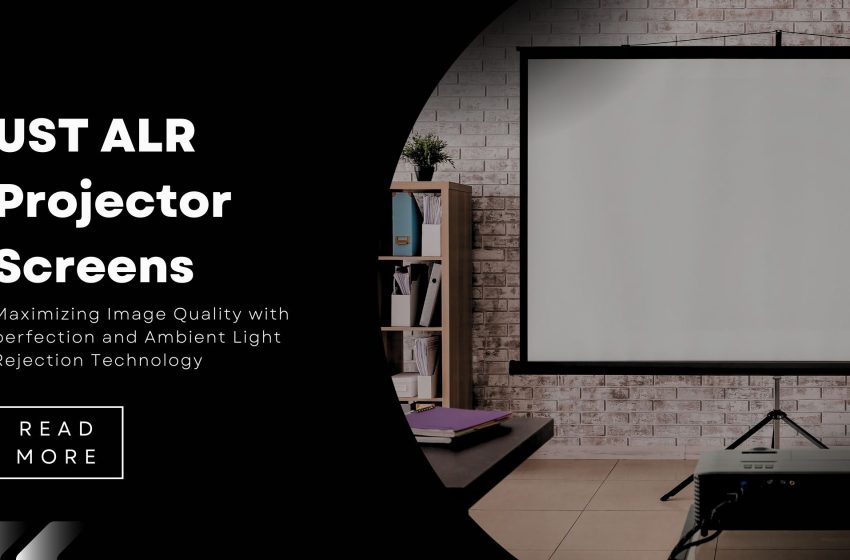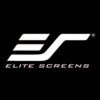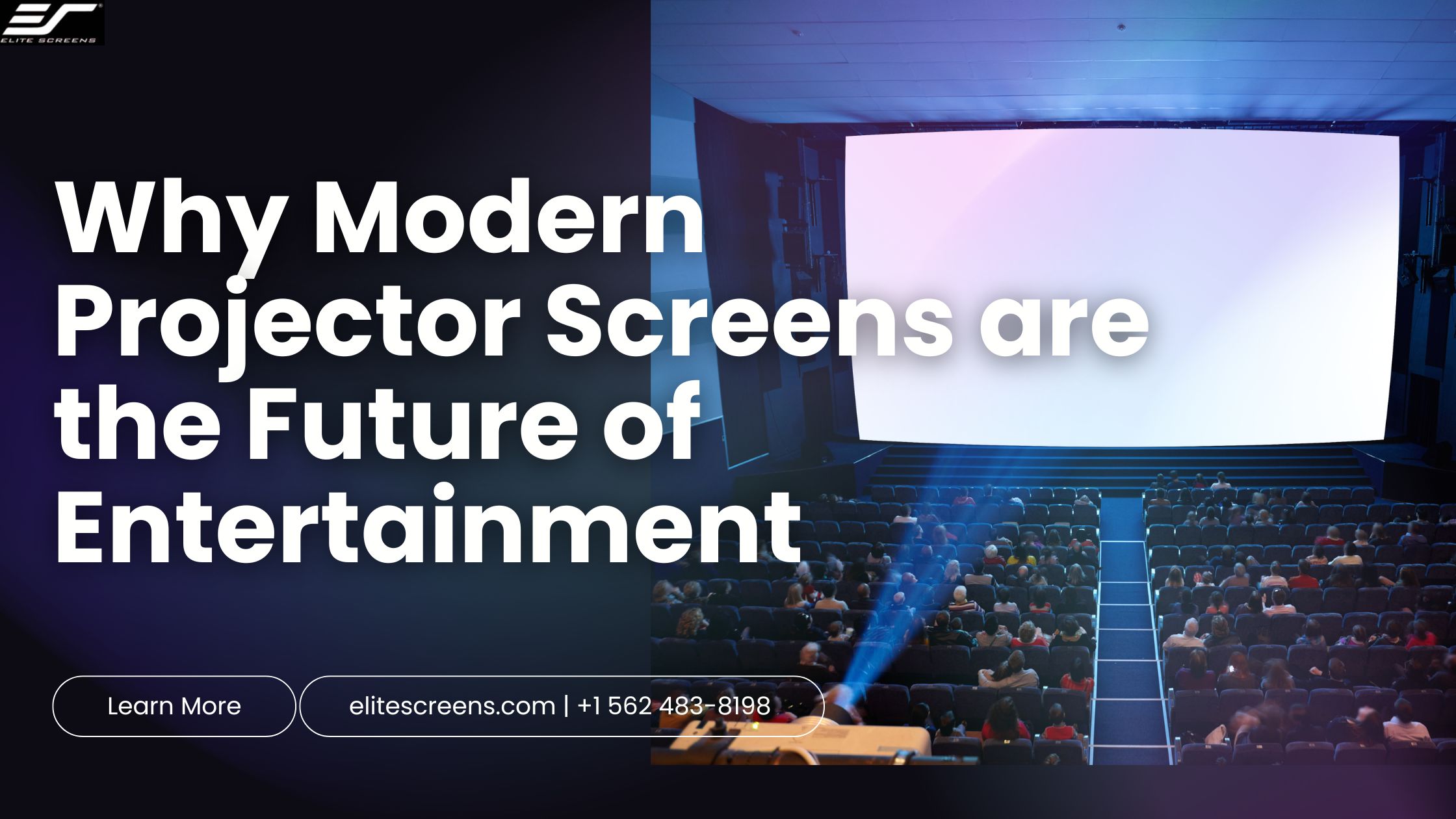Maximizing Image Quality with UST ALR Projector Screens: A Comprehensive Guide

In the world of projection technology, achieving superior image quality has always been the ultimate goal for home theater enthusiasts and professionals alike. One of the most significant advancements in this space is the introduction of Ultra-Short Throw (UST) projectors paired with Ambient Light Rejecting screens. This combination is revolutionizing how we experience projection systems, especially in well-lit environments.
In this guide, we’ll dive deep into how UST ALR projector screens maximize image quality, and why they are essential for anyone looking to enhance their viewing experience. By the end of this article, you’ll understand the technology, benefits, and key factors that make UST ALR screens a top choice for projection setups.
What is a UST ALR Projector Screen?
Ultra-Short Throw (UST) Projectors
Ultra-Short Throw projectors are designed to project large images from a very short distance, typically just a few inches away from the screen. These projectors are ideal for home theaters, classrooms, conference rooms, and any space where space-saving is crucial. Unlike traditional projectors that require a significant distance from the screen, UST projectors eliminate the need for long throw distances and reduce issues related to shadowing or obstructed views.
Ambient Light Rejecting (ALR) Screens
ALR screens are specifically designed to reject ambient light, enhancing contrast and image clarity in rooms with uncontrolled lighting. The screen surface is engineered to reflect the projector’s light directly toward the audience while rejecting light from other sources, such as windows or overhead lights. This results in vibrant, high-contrast images even in bright environments.
Together, UST projectors and ALR screens create an unbeatable combination, delivering exceptional image quality in various lighting conditions.
How UST ALR Screens Maximize Image Quality
1. Superior Light Rejection
One of the primary reasons why UST ALR screens enhance image quality is their ability to reject ambient light. Traditional screens, especially in rooms with windows or artificial lighting, tend to wash out when exposed to excess light. ALR screens combat this by using advanced materials and coatings to reflect projector light directly to the audience while rejecting light from other angles.
This light rejection technology ensures that:
-
Colors appear vibrant and true to life.
-
Blacks are deeper, improving contrast.
-
The overall sharpness of the image is maintained, even in brightly lit environments.
2. Designed for Ultra-Short Throw Projectors
Ultra-Short Throw projectors rely on precise angles of projection. Unlike long-throw projectors, which project at wider angles, ultra short throw projectors work best with ALR screens designed specifically for their narrow beam. ALR screens designed for UST projectors have a surface structure that reflects light back at the correct angle, maximizing brightness and image clarity.
3. Wide Viewing Angles
High-quality UST ALR screens provide excellent viewing angles, allowing viewers to enjoy sharp, vibrant images from nearly any seat in the room. This feature is crucial for home theaters or entertainment spaces where seating might be spread out. A wide viewing angle ensures that everyone gets the same image quality regardless of their position relative to the screen.
4. Increased Contrast and Color Depth
UST ALR screens are designed to work with the specific lighting angles and color profiles produced by ultra-short throw projectors. The reflective surface amplifies contrast, making dark scenes appear richer and more detailed. The enhanced color depth brings scenes to life, allowing you to experience a broader spectrum of colors, which is particularly important for movies, gaming, and presentations.
Key Features to Look for in a UST ALR Screen
1. Screen Gain
The gain of a screen refers to its ability to reflect light. ALR screens typically have a gain rating between 0.6 and 1.5, with lower gains favoring contrast in bright rooms and higher gains boosting brightness. A gain of around 1.0 is often recommended for UST projectors, providing a balanced mix of contrast and brightness without creating hot spots.
2. Surface Texture
The surface texture of an ALR screen plays a significant role in image quality. Smooth surfaces produce sharp images, but they can also cause glare in bright rooms. ALR screens with microstructures or special coatings ensure that the projector’s light is reflected efficiently while rejecting ambient light, improving image clarity.
3. Size and Aspect Ratio
Selecting the right screen size and aspect ratio is essential for maximizing your UST projector’s performance. For home theaters, a 16:9 aspect ratio is the most common, matching most movies and TV content. However, if you’re planning to use your projector for widescreen presentations or cinema-style viewing, a 2.35:1 ratio may be more suitable.
4. Frame Design
The frame of your ALR screen can influence how immersive the viewing experience feels. Screens with thin or edge-less frames allow the projected image to blend seamlessly with the surroundings, enhancing the cinematic feel. On the other hand, thicker frames can offer better contrast by providing a clear boundary between the projected image and the room.
Choosing the Right UST ALR Screen for Your Setup
When selecting a UST ALR screen, it’s essential to consider several factors that impact overall performance:
-
Room Lighting Conditions: Evaluate how much ambient light is present in your room. The more light you need to combat, the more important it is to invest in a high-quality ALR screen.
-
Projector Brightness: Your projector’s brightness, measured in lumens, should be matched with the screen’s gain to ensure optimal performance. A high-lumen projector paired with a low-gain ALR screen can create perfect balance for bright rooms.
-
Screen Size: Make sure the screen size is proportionate to your projector’s throw distance and the size of your room. For UST projectors, the recommended screen size is often between 100-120 inches.
-
Budget: UST ALR screens come in a variety of price ranges. While premium screens offer superior materials and features, there are more affordable options that still provide excellent performance.
Conclusion: The Future of Projection with UST ALR Screens
Incorporating a UST ALR projector screen into your home theater or professional setup is one of the best ways to enhance image quality, especially in rooms with high ambient light. The combination of ultra-short throw projection and ambient light rejection technology creates a dynamic visual experience that rivals traditional large-format displays.
By carefully selecting the right screen and pairing it with a quality UST projector, you can achieve stunning visuals, vibrant colors, and deep contrast—transforming any space into an immersive viewing environment.
For anyone looking to maximize image quality in a projector screens, a UST ALR screen is the clear choice, offering unmatched performance, versatility, and style.




